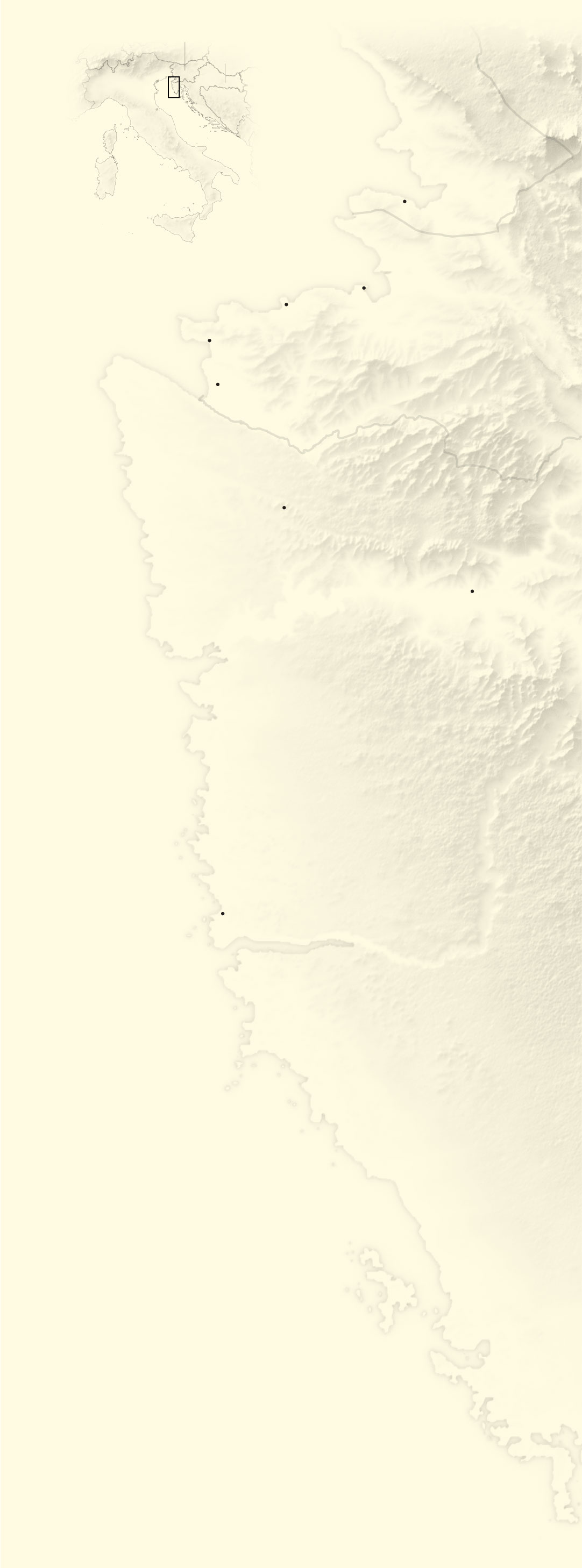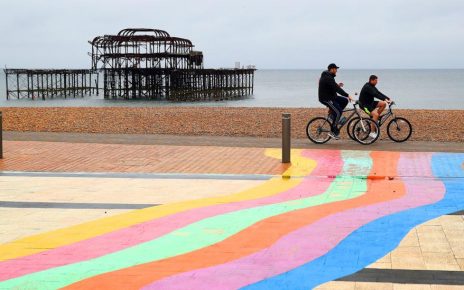A bike ride from Trieste, Italy, through Slovenia, to the ancient city of Pula, Croatia, starts from the Adriatic coast’s 90-degree bend on the sea’s northern coast and rolls down its eastern shore to the tip of the Istria peninsula. The 150-mile leisurely journey brims with ancient traditions, sublime food and perched-village photo ops. History here is measured in millenniums and empires: Roman, Byzantine, Venetian, Napoleonic, Austro-Hungarian.
The Route
The ride follows two routes: the EuroVelo 8 and the Parenzana Trail. The trails overlap for much of the itinerary before separating and then reuniting on Croatia’s Istrian coast. The six-stage ride covers between 22 and 30 easy-to-moderate miles per day, with occasional challenging ascents. Cyclists pedal enough to see loads of culture while earning their seafood, pasta and wine — but not so much that they’ll be exhausted.
You’ll start in Trieste by hopping on the 4,700-mile EuroVelo 8 (EV8), which extends from Cádiz, Spain, to Cyprus. The EV8 is part of the EuroVelo network, which began 25 years ago with 12 routes crisscrossing the continent. Today, the network connects 42 countries on 17 routes, covering more than 50,000 miles. The most recent trail, running from Austria to Hungary, was added in 2020.
“The fact that more people are taking up cycling is great for all of us,” EuroVelo’s director, Ed Lancaster, recently told me. “Cycling supports local economies,” he said, noting that it also “reduces tourism’s environmental footprint.”
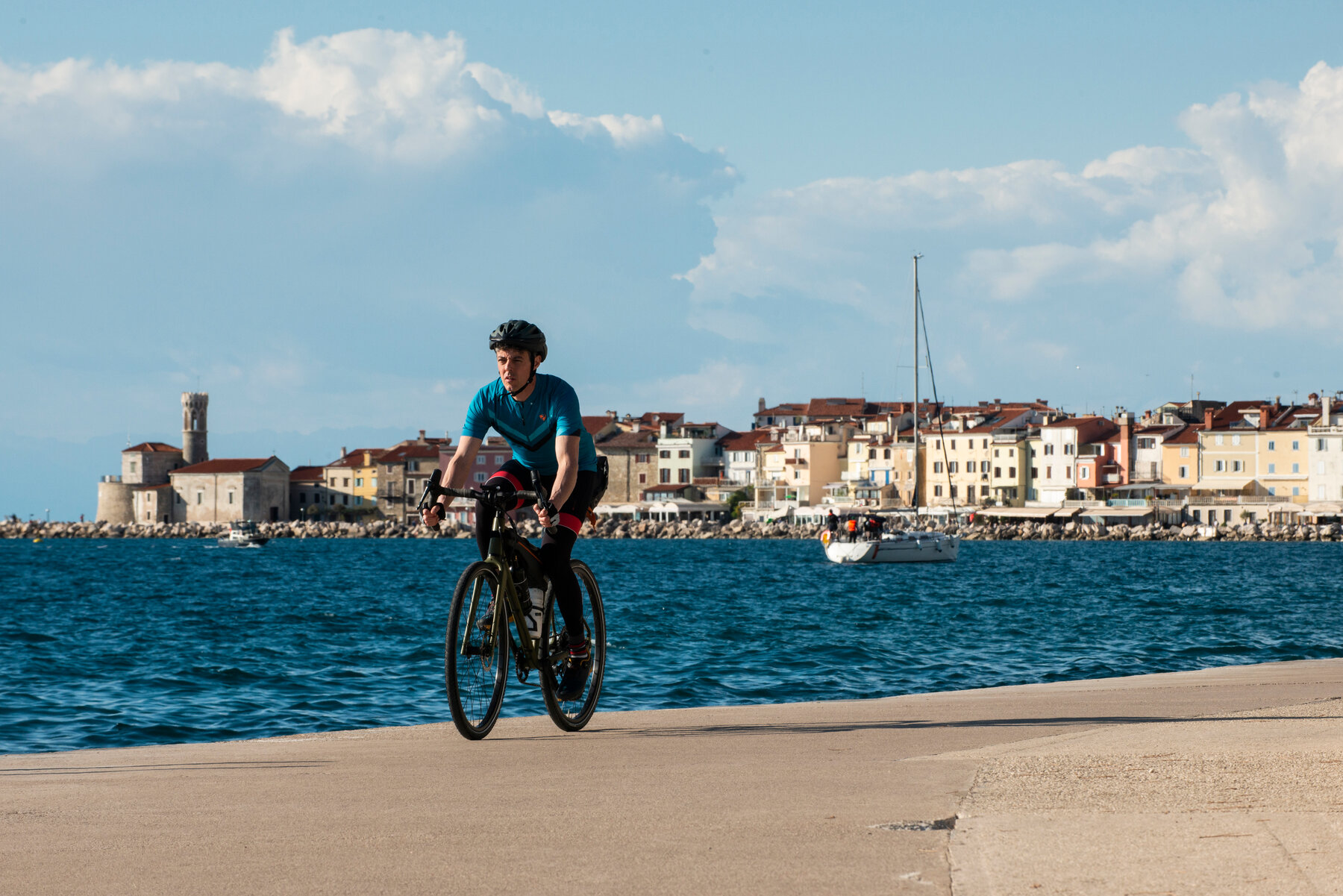
Cycling along the Adriatic coast in Piran, Slovenia.
South of Trieste, in Muggia, Italy, the EV8 overlaps with the Parenzana Trail through Slovenia. The routes diverge in Croatia, where you’ll take the Parenzana, which follows the path of the former Parenzana railroad. Built by the Austro-Hungarian Empire in 1902, the train connected 33 stations over 76 miles from Trieste to the Croatian town of Poreč, on the Istrian coast. Today it provides a cycling corridor through communities known for truffles, olive oil and wine.
Both the EV8 and the Parenzana roll across multiple surfaces: bike paths removed from traffic; roads and byways, often with little traffic; and gravel trails through vineyards and forests.
Among the reasons I suggest this ride: The stages are short, signage is regular and the path is packed with villages and services. On a recent trip, I stayed at bike-friendly hotels and guesthouses, and set off each morning around 8 a.m., giving myself plenty of time to explore.
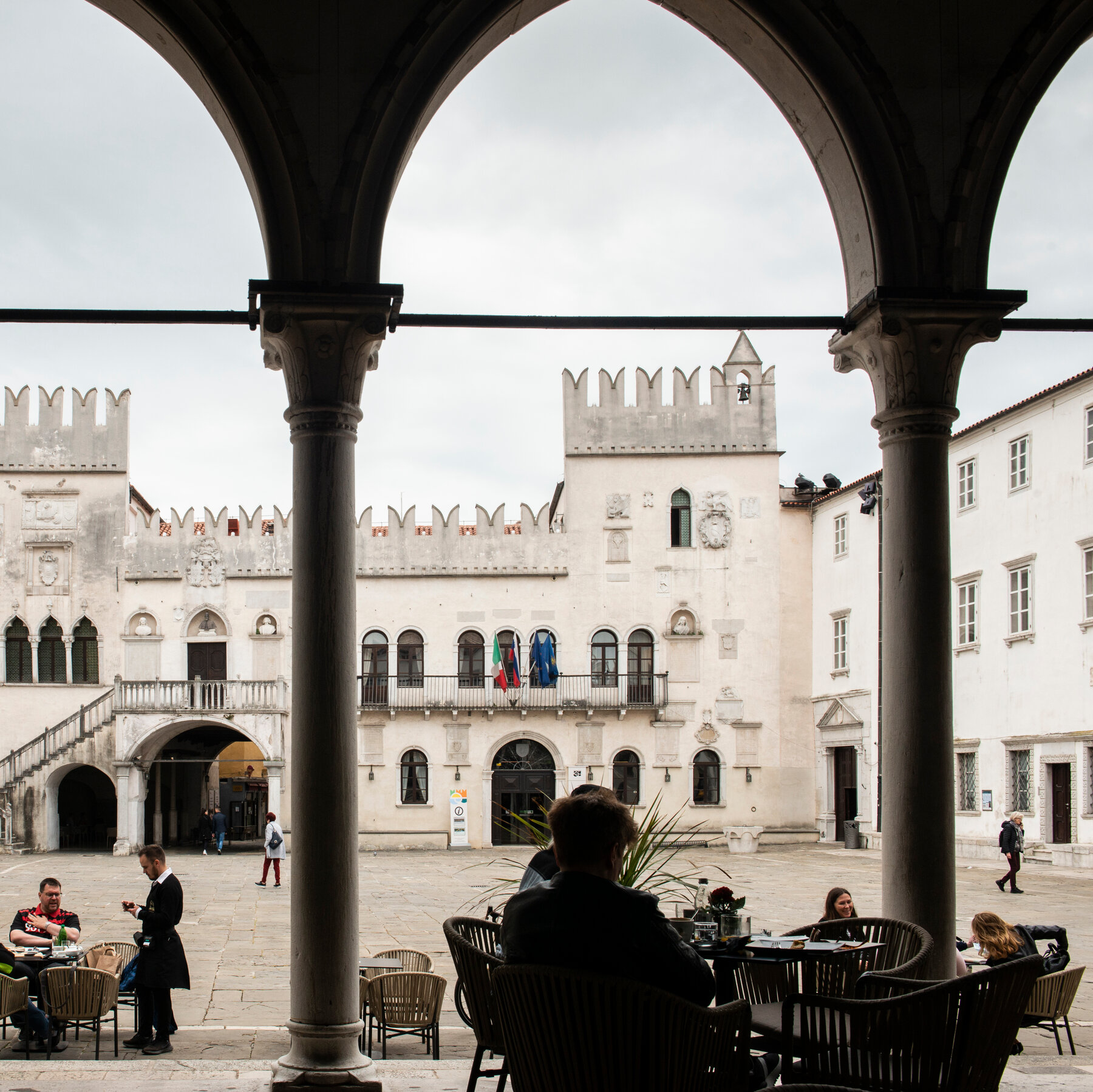
Day 1: 30 Miles from Trieste to Piran, Slovenia
A smooth start on the coast
After arriving in Trieste from Ljubljana, where I live, I started my journey with a two-cup morning in the home of the Illy coffee company and, arguably, Italy’s coffee capital. The first stop was the Illy Ponterosso cafe at the mouth of Canal Grande, whose outdoor tables overlook the canal flowing into the Gulf of Trieste. As I sipped an espresso, I inspected my gravel bike (a hybrid with road-bicycle geometry and off-road sturdiness). It was loaded with bags for clothes, tools, maps and notebooks. Behind me, the statue of James Joyce, who lived and wrote in Trieste, seemed to prod me to my next cup on the Piazza Unità d’Italia, said to be Europe’s largest sea-facing square, where I sat at the Caffe degli Specchi amid Hapsburgian architectural pomp. By the time I finished my coffee, I was ready to hit the trail.
From the piazza, I jumped directly onto the EuroVelo 8 and rode for nearly nine miles on two-lane roads and bike paths to the fishing village of Muggia, where the Parenzana Trail begins and the two routes merge. I crossed into Slovenia, which immediately lived up to its reputation for cycle-based travel. For most of the country, the asphalt path — often running parallel to traffic as it passes towns and runs through occasional stretches of forests — is flat, dedicated to bicyclists.
My first stop — at a pekarna (bakery) for a chocolate croissant — was in Koper. Slovenia’s only shipping port feels industrial until you reach its medieval, Venetian Republic-era center. I pushed my bike across cobbled streets leading to Tito Square, home to the 13th-century Praetorian Palace and the 177-foot City Tower, with views down the coast.
There are nine tunnels, six viaducts and 11 bridges along the Parenzana Trail from Italy to Croatia.
The path hugged the shore to Izola, with its laid-back marina filled with sailboats and fishing skiffs, and climbed into the forested countryside. Soon I entered the first of several old stone tunnels along the Parenzana Trail. On the other side of the 600-yard Valeta Tunnel, the trail descended into farms and vineyards.
The seaside resort of Portorož came into view and, beyond it, Piran, another town with ancient roots and Venetian landmarks. Here I took a local bike path from Portorož to Piran, which sat on the tip of a finger-shaped peninsula pointing at Italy.
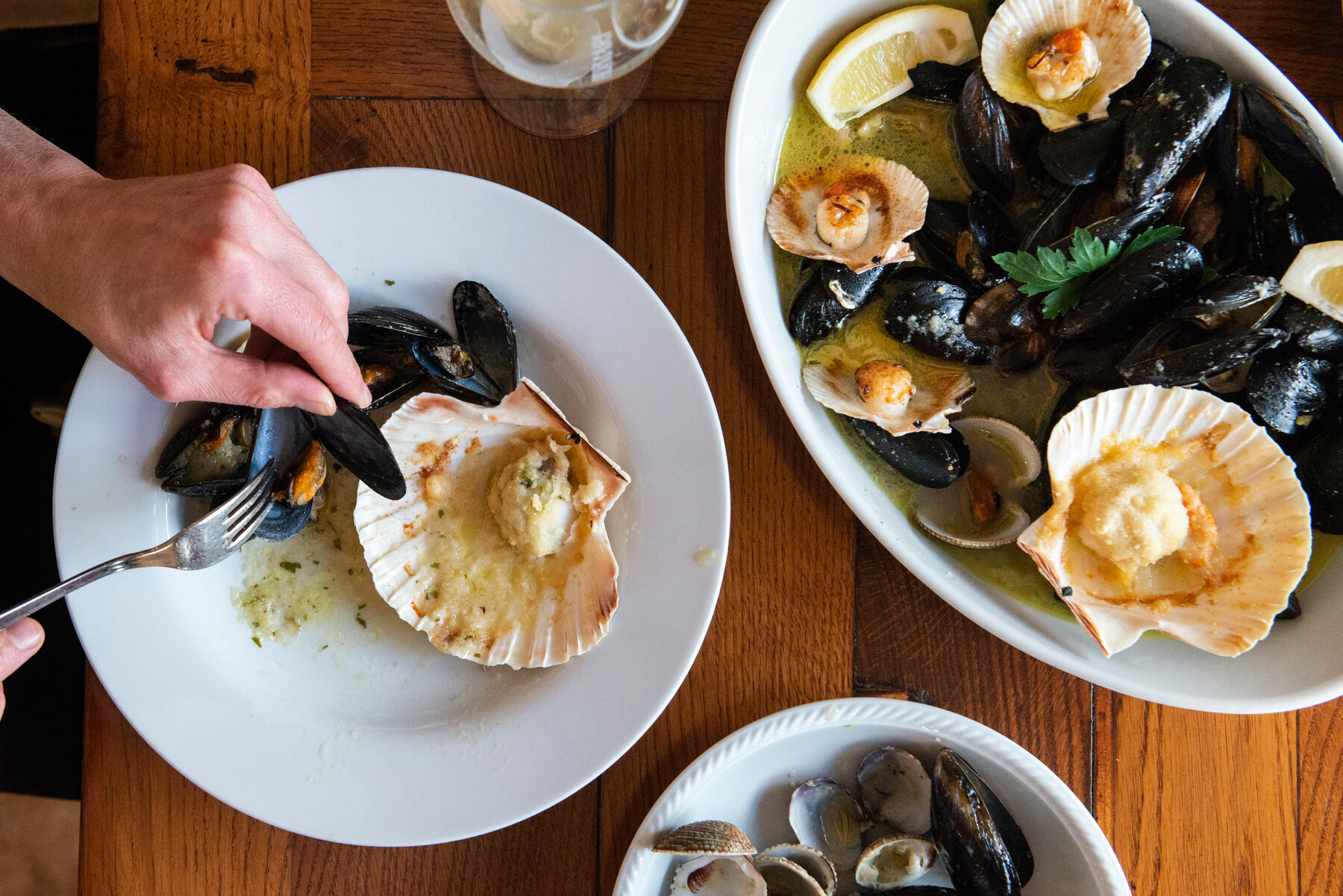
Platter of shellfish at the family-run restaurant Pri Mari in the seaside town of Piran, Slovenia.
That evening, at the family-run restaurant Pri Mari, I ordered a glass of local pinot blanc and the John Dory (a flaky, white fish) baked with herbs. Dessert was a pear cooked in red refosco wine, drizzled with chocolate. Over the span of 30 miles, I had rolled across two countries and five coastal towns.
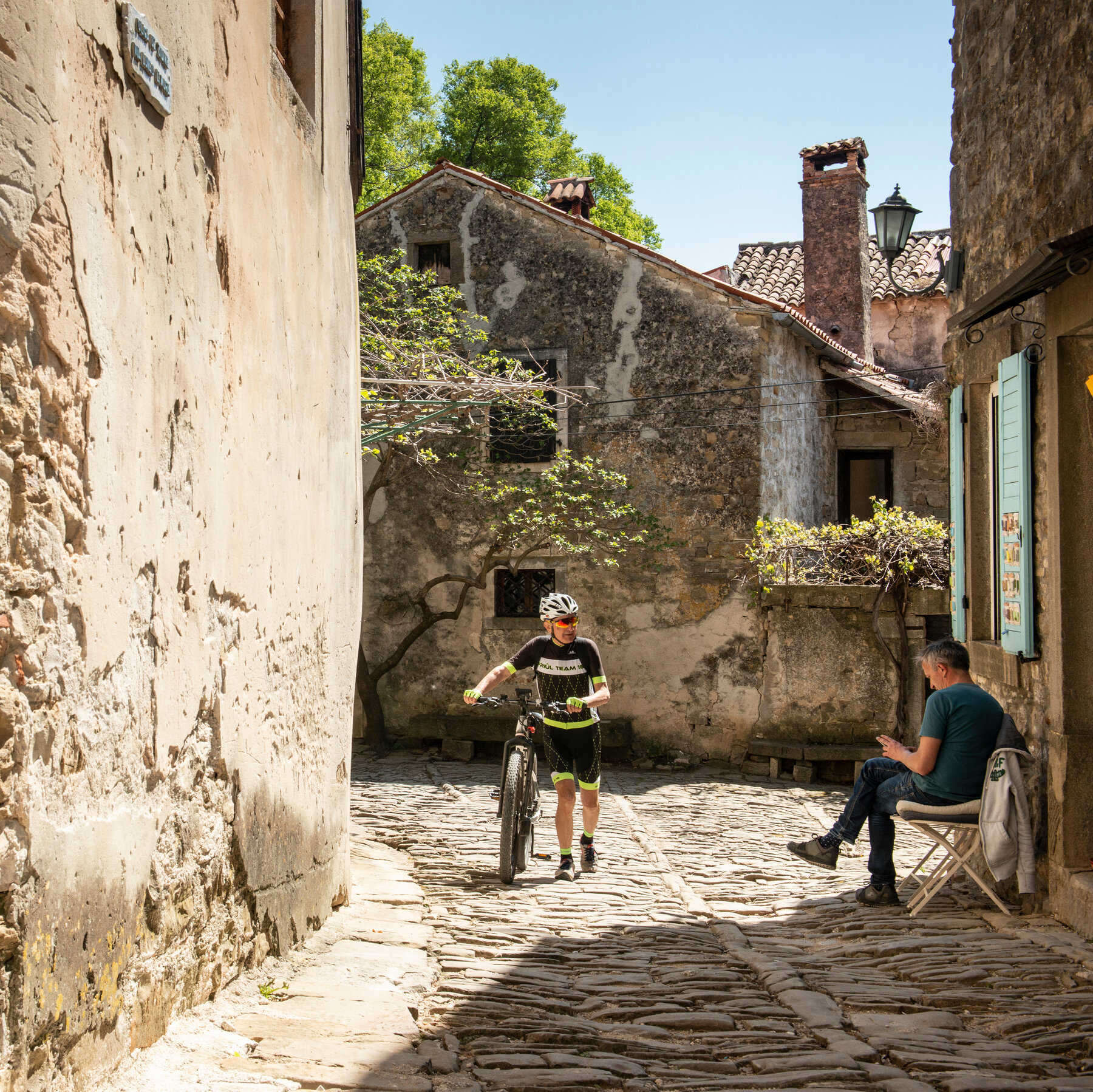
Day 2: 23 Miles from Piran, Slovenia, to Grožnjan, Croatia
Into Croatia on the Parenzana Trail
Asphalt changed to gravel when I crossed into Croatia. As I pedaled along the border, Slovenia’s Secovlje Salina Nature Park — where one can visit ancient salt flats — filled the vista. Soon after, the two routes forked. The EuroVelo 8 continues to the Adriatic (I would rejoin it in Porec), and the Parenzana, which I followed, made a U-turn as it headed into Istria’s inland, foodie center.
I pedaled on the packed-gravel path that ran alongside a remote state road, steadily ascending from an elevation of around 250 feet to about 950 feet. In the hilltop town of Buje, I stopped for a beer-tasting at San Servolo Resort. Nestled in wine country, Istria’s best beer maker has built a compound with a brewery, steakhouse, pizzeria, hotel and spa with brew baths.
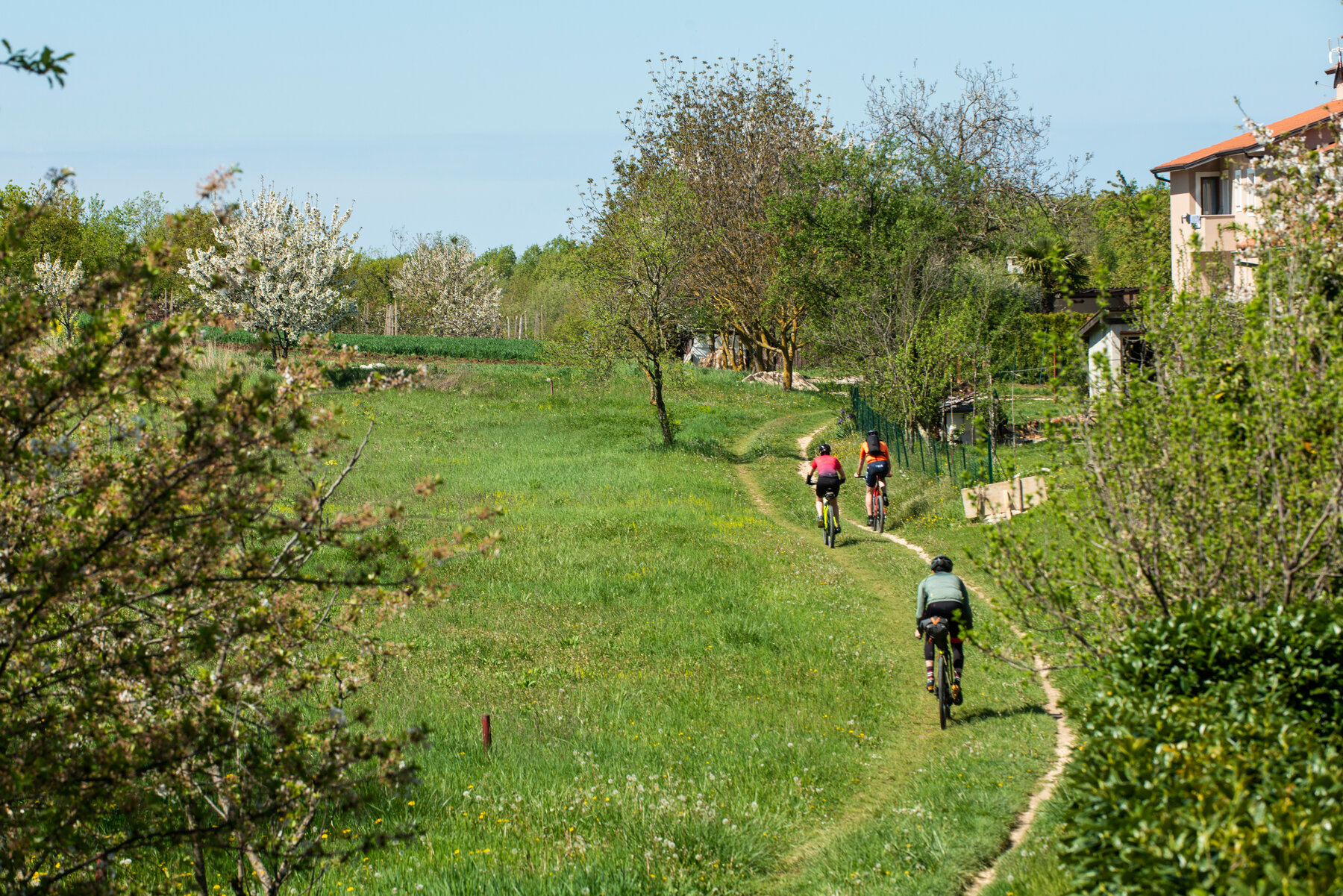
Croatia’s section of the Parenzana takes cyclists inland before reuniting with the Adriatic Sea.
I continued my relaxed ascent to Grožnjan, a bohemian village perched at around 900 feet, where a Neolithic fort once monitored the peninsula below. Today, artists’ ateliers line its pedestrian-only streets and draw visitors, who flock here every summer for a jazz festival, as well as drama, music, dance and meditation workshops.
I pushed my bike along stone alleyways to Vero, a cafe-bar with views of the Mirna River Valley and the Motovun Forest, where white and black truffles grow beneath oak, ash and beech trees. I ordered a glass of biska, homemade mistletoe schnapps. In the distance, Motovun, another perched village and the next day’s destination, poked through the clouds.
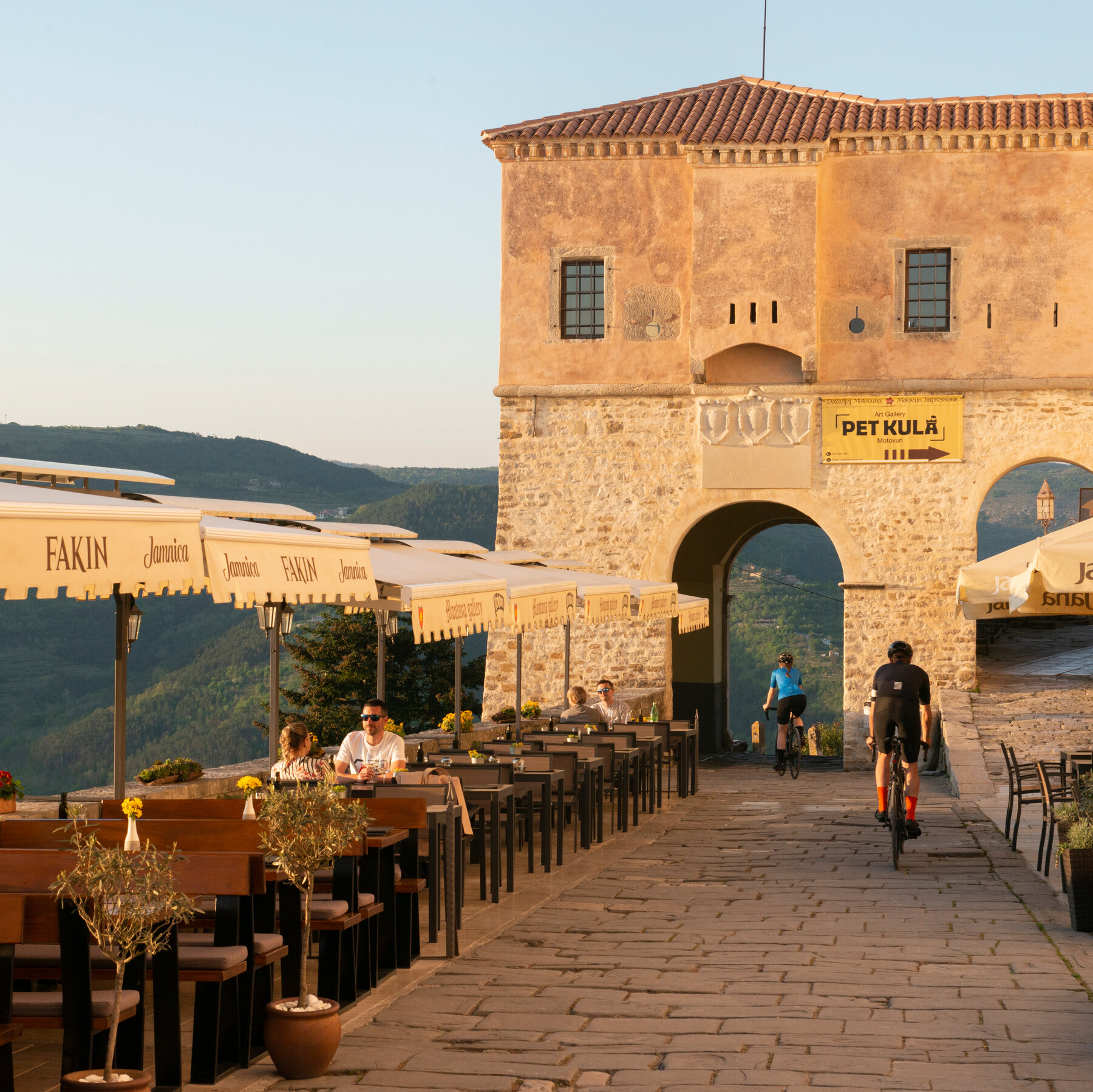
Day 3: 22 Miles from Grožnjan to Motovun, Croatia
In the land of truffles
Since this was my shortest riding day (17 miles), and would often have me on a gradual descent, I decided to take a five-mile detour for lunch. In the town of Livade, I turned east on a service road that parallels the Mirna River and pedaled to the community of Gradinje and Konoba Dolina, where I sat on the restaurant’s wraparound porch.
I’ve been to Dolina several times — and, to me, this is quintessential Istria. Simple, inexpensive, homemade dishes, virtually all of which focus on truffles. People may associate the pungent fungus with France and Italy, but the tuber is a way of life in Istria, where, in 1999, the world’s largest white truffle was unearthed. (At nearly three pounds, it was, at the time, the Guinness World Record holder.)
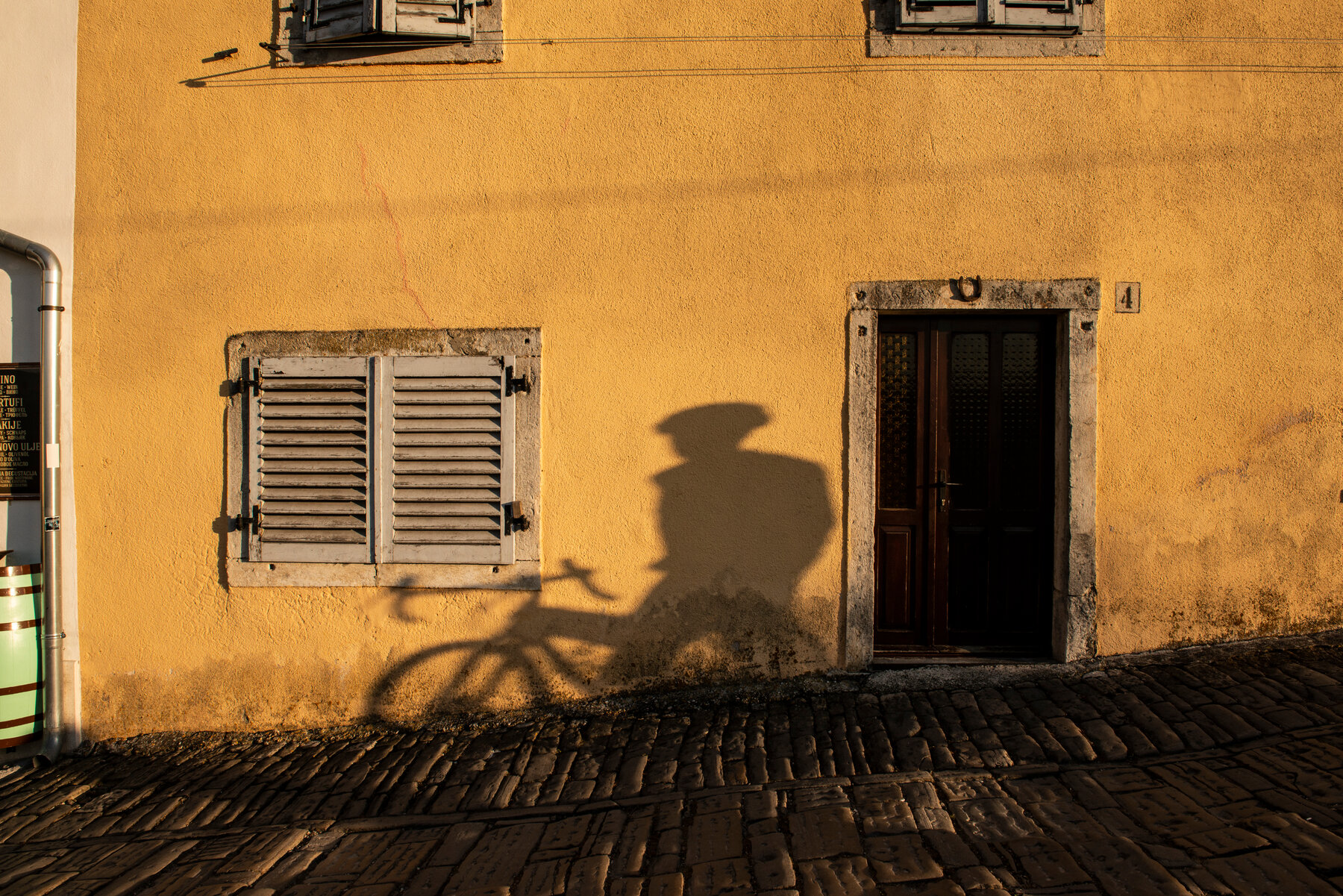
Streetscape in Motovun, Croatia.
The midday sun shone on my face when a glass of malvasia, Istria’s classic white wine, arrived. “Truffle hunters and their dogs come straight from the woods to sell us what they’ve found,” the waiter said as he brought my starter of scrambled eggs with shaved white truffles. When he put a dish of fuži pasta (a sort of rustic penne) before me — again topped with white truffles — he said simply: “Don’t use Parmesan. You’ll hide the flavor.”
The day’s only real climb (around 600 feet) took me to Motovun. At the top, I walked the town’s steep, medieval, flagstone streets to Konoba Mondo, another intimate bistro famous for truffles, for my second round. I sat on the terrace where “Tartufi” (truffles in Croatian) was painted on a wooden sign on the wall. This time I had steak topped with slivers of black truffles, an Istrian red called teran, and the tavern’s knockout panna cotta in a wild-berry sauce.
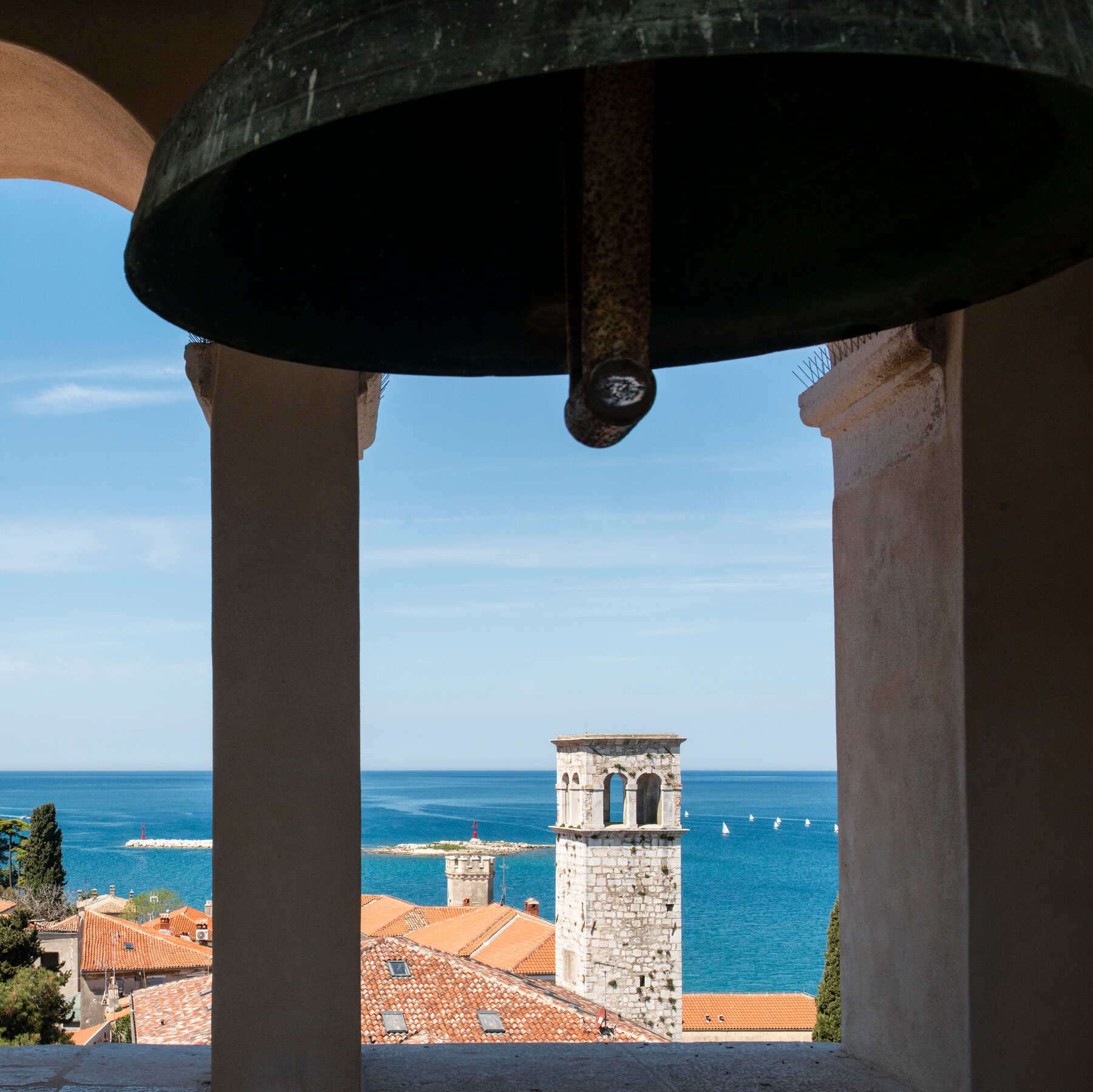
Day 4: 23 Miles from Motovun to Porec, Croatia
Back toward the sea
Istria is wine country. The Greeks grew grapes here more than 2,500 years ago. Today, there are hundreds of winemakers; over 100 are officially associated with the peninsula’s wine roads. Of the many varieties produced, the dominant two are malvasia, a white, and teran, a red.
As I rode to the coast, the Parenzana glided along a gravel trail that undulated through forests and vineyards; rows of vines rolled over the landscape like waves of corduroy.
I could smell the Adriatic before I saw it. Its fragrance, coupled with the sensation of traveling under my own power, gave way to exhilaration as I descended to the sea and the Parenzana Trail’s terminus in Porec’s historic center.
The seaside promenade outside Porec’s UNESCO-inscribed Euphrasian Basilica.
Porec’s Old Town is a compact tangle of streets resting on a spit of land thrust into the sea. Its recorded history dates back thousands of years. The Romans established an important colony, Parentium, in the second century B.C. However, it is the UNESCO-inscribed Euphrasian Basilica, from the sixth century A.D., that has become the town’s calling card. The sprawling Byzantine-era complex borders the shore alongside bars, shops and restaurants. I stood inside the central apse, mesmerized by the mosaics: a swirl of marble, ivory and mother-of-pearl.
After an awe-filled couple of hours, I walked through Old Town to Konoba Ćakula for seared tuna steak and then continued around the southwestern edge of the city’s peninsula to my room at the bike-friendly BO Hotel Palazzo.
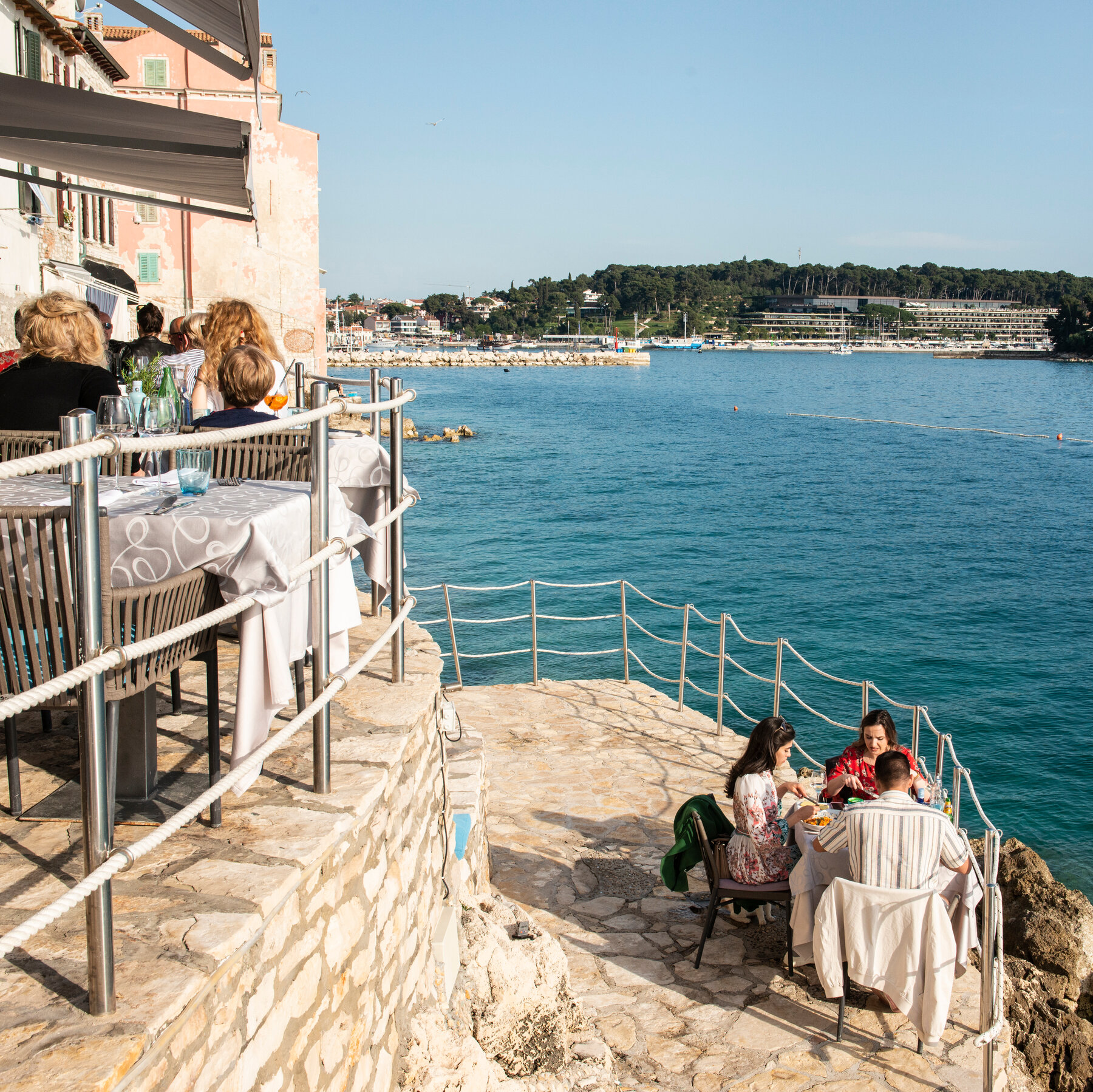
Day 5: 27 Miles from Porec to Rovinj, Croatia
Challenging climbs along the EV8
The Parenzana ended as I left Porec on the seaside Route 143, and the EuroVelo 8 took over for the last two days. Signage and scenery weren’t the only changes. The trail went from mainly gravel to mostly asphalt, and there was more climbing. This meant pacing myself up crests, which, on a positive note, provided great vantage points, and then using gravity through the troughs.
Such was the case as I pedaled through the town of Vrsar — where Casanova’s visits in the 1740s have inspired a historic center tour following his exploits — before climbing above the Lim Channel and then descending to its edge. At the bottom of the 7.5-mile-long, fjordlike channel, which feeds into the sea and creates perfect conditions for shellfish farming, I stopped at Restaurant Fjord (+385 52 448 222) on the channel’s banks. After a pick-me-up of a half-dozen European flat oysters harvested within view of my table, I climbed 492 feet back up the fjord’s south face.
The coastal track between Porec and Vrsar, Croatia.
The day ended in Rovinj, more than halfway down the coast. The sun was setting on the town’s row of pastel buildings overlooking the Adriatic. The center — another compact, peninsular collection of serpentine alleys — teemed with tourists and locals. Croats stood around converted-barrel tables drinking white wine next to the outdoor market. Visitors studied maps under the 17th-century Balbi’s Arch, which sits between the main square and Grisia Street. From there, they would lumber up the cobbled street, crowded with boutiques and galleries, to the hilltop, 18th-century Church of St. Euphemia.
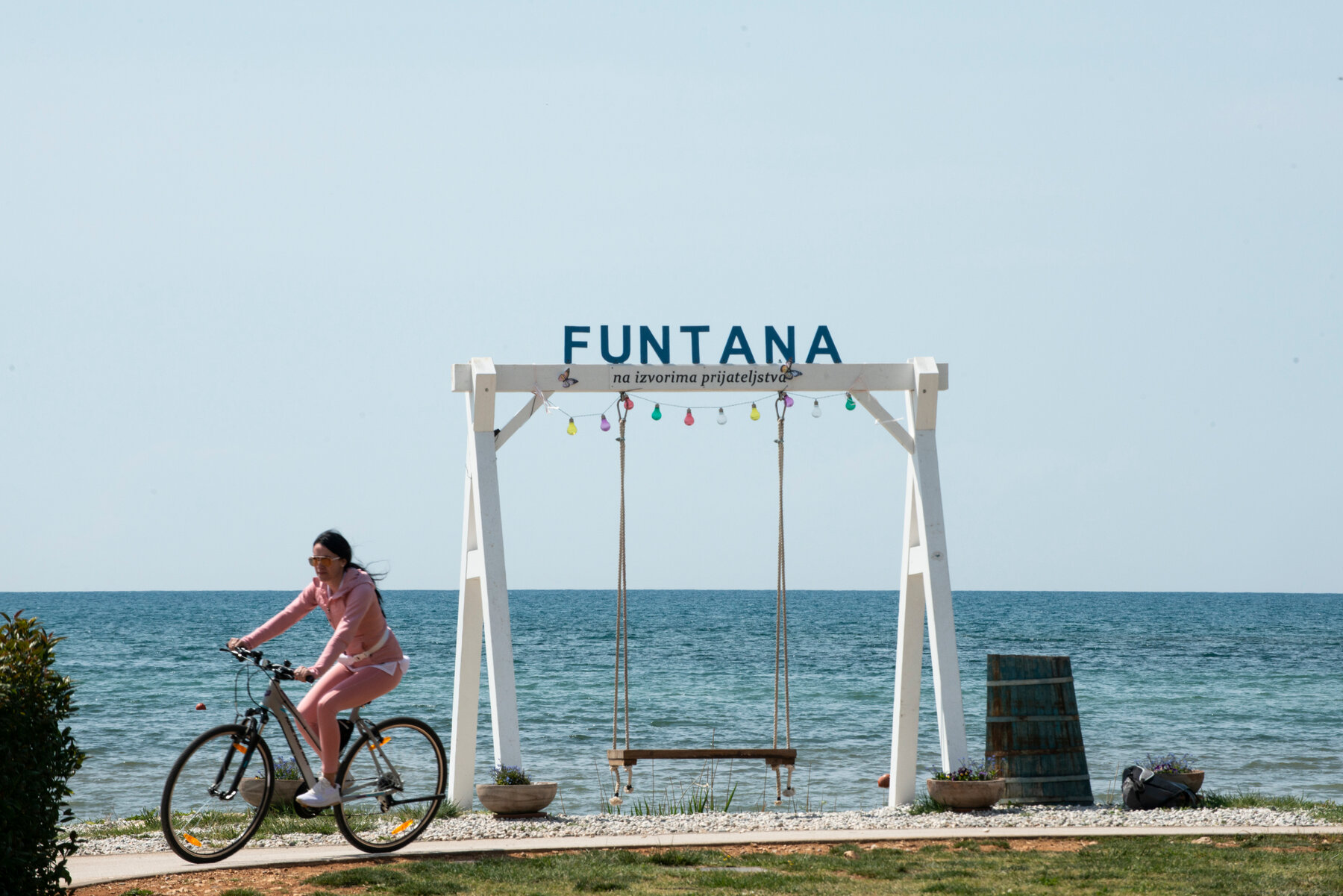
The Eurovelo 8 cycling route near Funtana, Croatia.
I pushed my bicycle along the waterside promenade to La Puntulina and took a seat on the southwest-facing terrace. I ordered mussels steamed in wine, garlic and olive oil, and grilled sea bream and sipped a malvasia from the Matošević Vineyards, which I had cycled past near the Lim Channel, and watched the sun meet the sea.
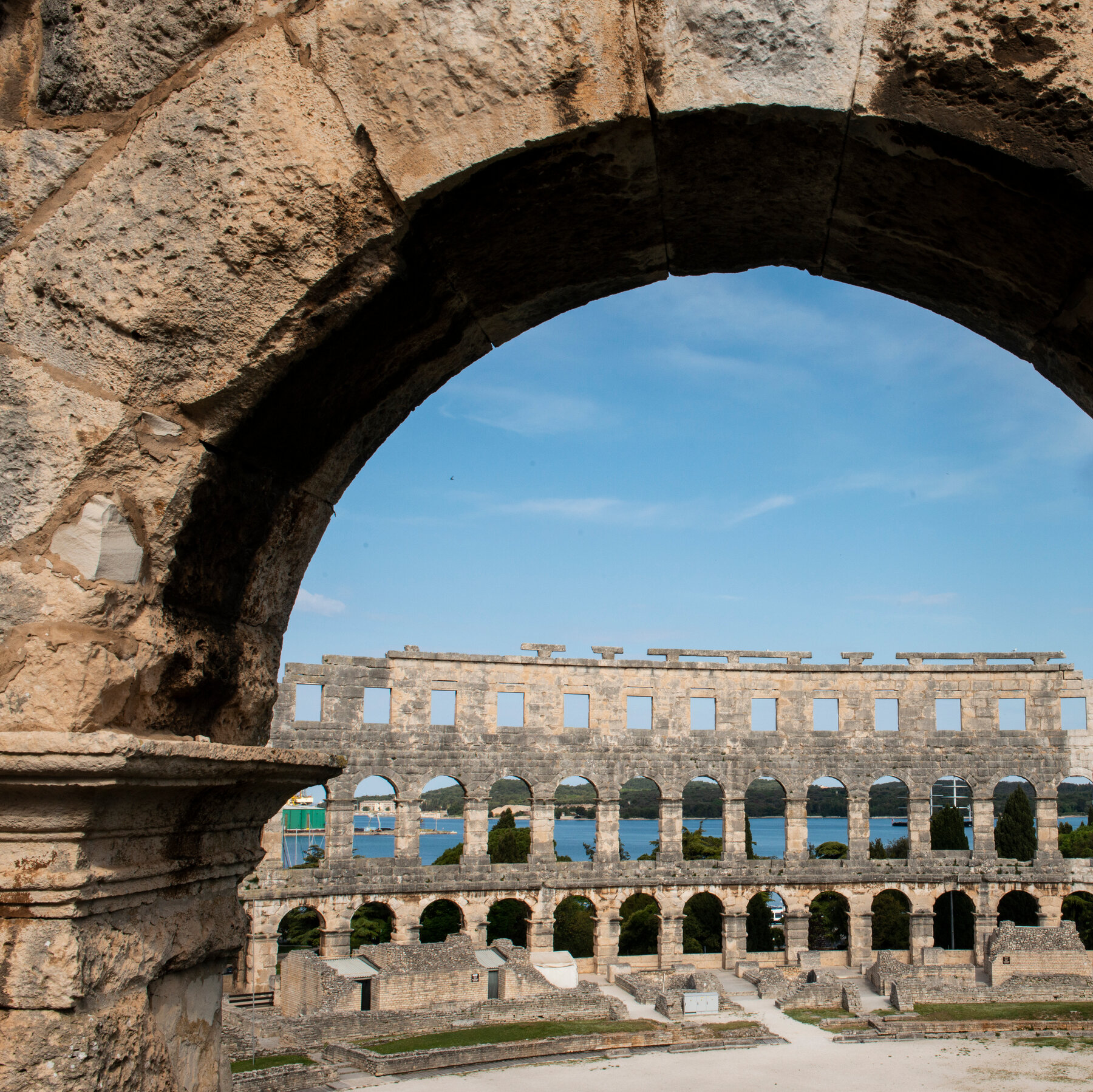
Day 6: 25 Miles from Rovinj to Pula, Croatia
Hugging the coast on the final stretch
By Day 6, I was used to the routine: wake, ride, explore. What I’ve never grown accustomed to, even living in the region for years, is the amount of culture packed into every locale along this 150-mile, three-country ride. Pula, Croatian Istria’s largest city and my final destination, was no exception.
A mix of industrial, shipbuilding grit and ancient culture, Pula is famous for its sprawling Roman amphitheater. I rode straight there, eager to see the first-century structure, known locally as the Arena. It is still in use as a concert venue and the site of the annual Pula Film Festival. I then pedaled to a cafe-bar on the main square — the site of the ancient Forum, from the first century B.C., and the Temple of Augustus.
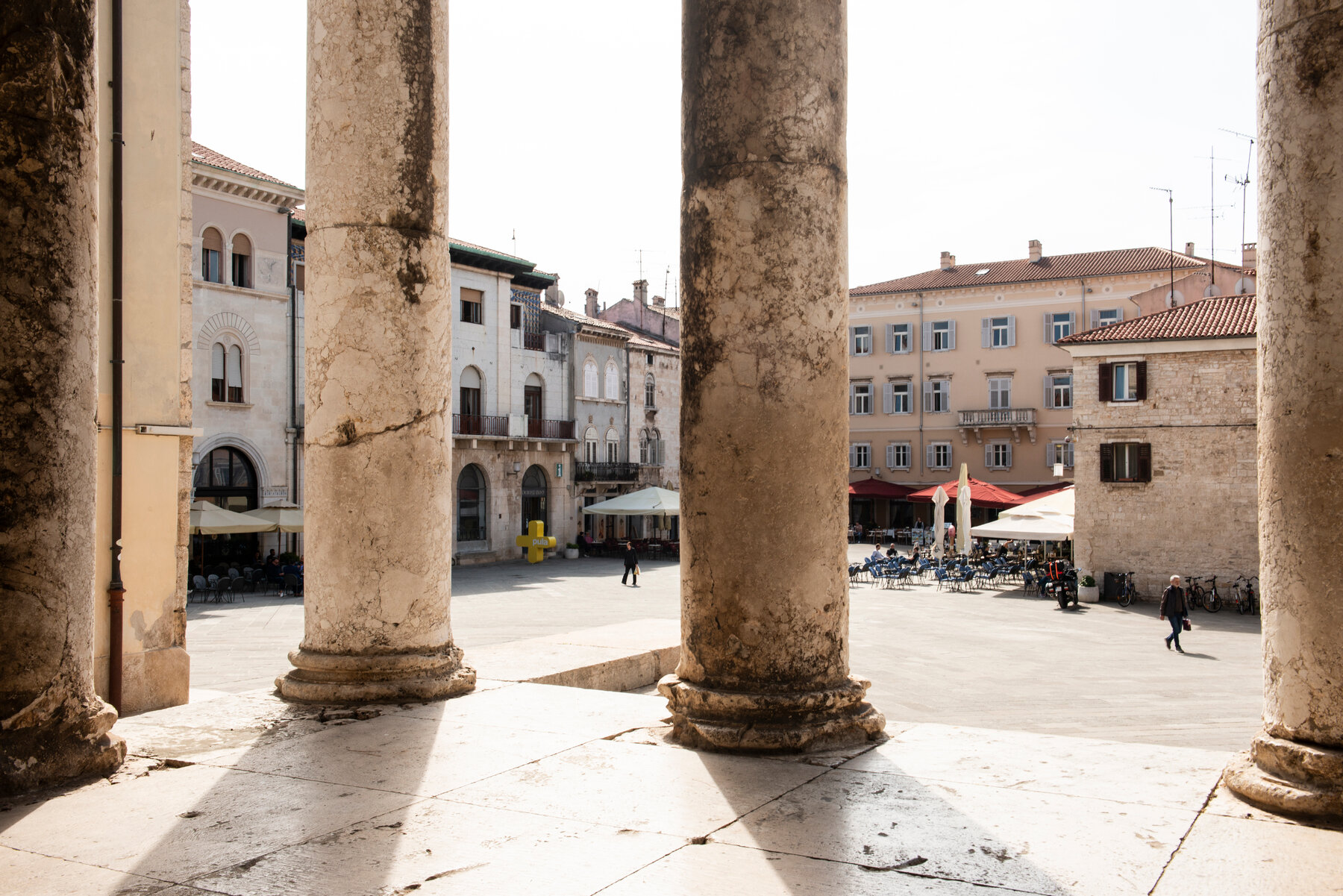
In Pula, Croatia, the main square is the site of the ancient forum.
A waiter carrying half-liter mugs filled with beer passed by. The end of my journey mirrored the beginning: After cycling from the top of Istria to the bottom, I was again on a plaza staring at the Adriatic. Like that morning in Trieste, which now seemed weeks ago, I decided to splurge with two drinks. This time I opted for ice-cold beer.
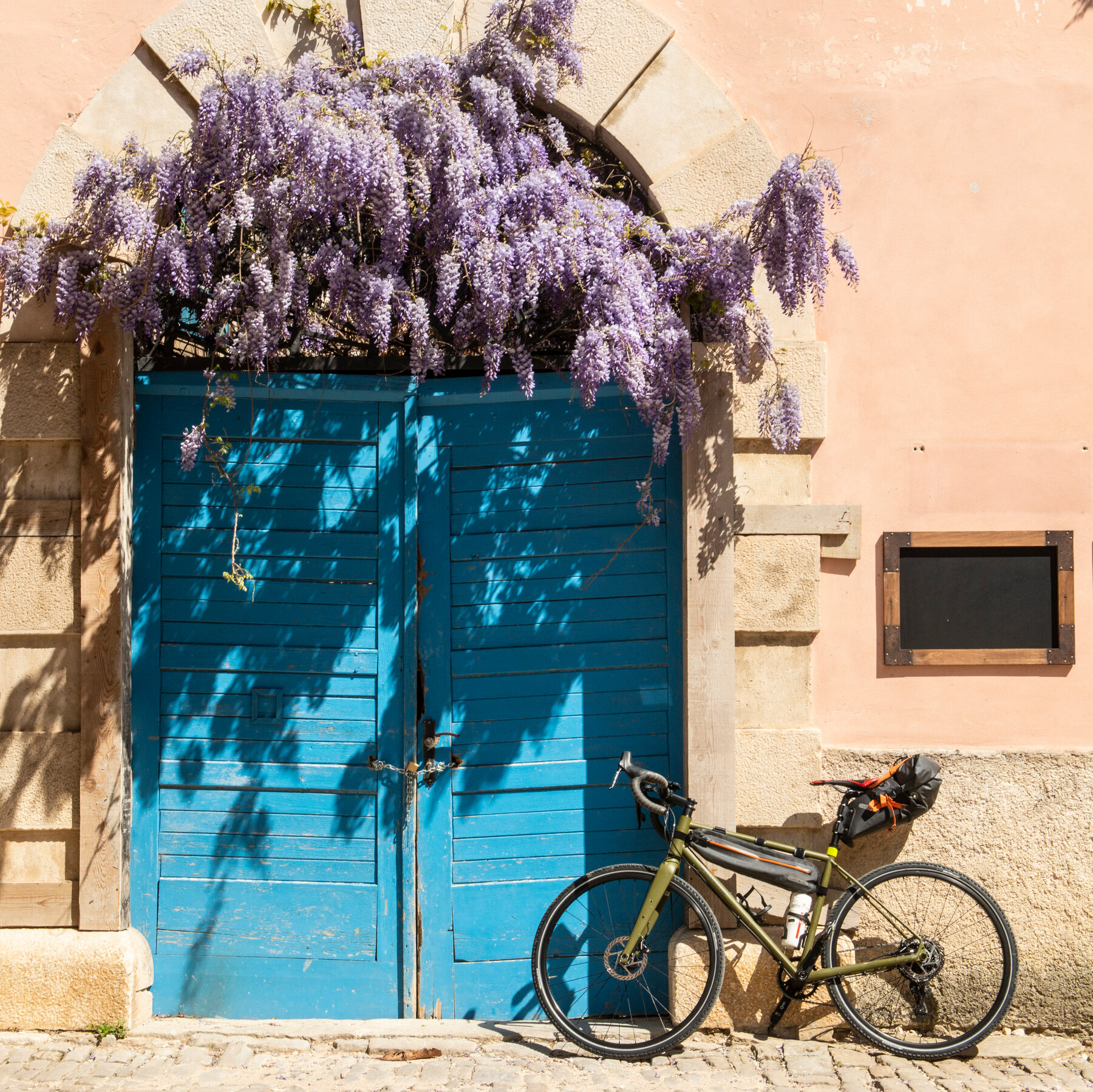
What, how and when?
For touring, I ride a gravel bike, which combines long-distance rideability with rough-and-tumble strength. I carry four bike packs: a seat pack for clothes; a frame pack for tools; a large handlebar pack for extra tools and toiletries; and a smaller handlebar pack for passport, wallet, notebooks and maps.
My trip began with a three-hour train ride from Ljubljana, where I live, to Trieste. In addition to the 9.90 euro (about $10.30) train ticket, there was an additional 5 euro charge for my bike. At the end of my tour, I took the train back to the Slovenian capital from Pula. (For those returning to Trieste, taking the train back through Ljubljana is still the fastest option.)
I recommend two bike rental spots in Trieste: Ones, next to the Canal Grande, and Trieste Green Tour, a five-minute walk north from the canal.
The ideal times for this ride are spring, when wildflowers are in bloom, but tourist season isn’t, and fall, when temperatures are perfect, and grape and olive harvests are in full swing.
Lodging
There are campsites, private accommodations and hostels along the route. There are also bike-friendly hotels. For the lodgings below, rates are per night for doubles during the first week in June.
In Trieste, Urban Hotel Design welcomes cyclists with 49 rooms (€174, or about $182). In Piran, Slovenia, Hotel Piran, opened in 1913, is a seaside, four-star option (€156). Over the Croatian border in Grožnjan, the six-room B&B Artegnana 1798 is, like its hilltop village, full of character (€112). In old town Motovun, Villa Borgo (and annex) has 15 rooms and an apartment (779 Croatian kuna, or about $108). The 74-room, waterfront BO Hotel Palazzo in Porec is both chic and relaxed (€131). Rovinj’s Hotel Eden is a great place to rest before the final stage (€230). Finish in Pula overlooking the Adriatic at Hotel Park Plaza Histria (€132).
